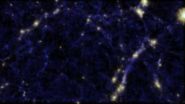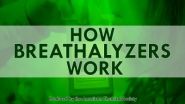(Press-News.org) Fresh banana, a waft of flowers, blueberry: the scents in Shota Atsumi's laboratory in the UC Davis Department of Chemistry are a little sweeter than most. That's because Atsumi and his team are engineering bacteria to make esters -- molecules widely used as scents and flavorings, and also as basic feedstock for chemical processes from paints to fuels.
Their latest work is published March 9 in the journal Nature Chemical Biology.
Nearly all industrial chemicals, from artificial flavorings to paint, are derived from oil or gas, Atsumi said.
"Our motivation is to make chemicals from renewable sources instead," Atsumi said. Scents and flavorings make up a $20 billion industry worldwide, he said.
Esters are molecules in which two chains of carbon atoms are linked through an oxygen atom. They are made chemically by reacting an alcohol with an organic acid. But the thermodynamics of this reaction mean that it tends to run the other way -- it's easier to break up an ester than to make it.
Living cells can also make esters. For example, yeasts produce small amounts of esters that give flavors to wine and beer, without requiring high temperatures or special conditions.
"The reaction is chemically difficult but biologically easy," Atsumi said. "Nature gives you a great system to work with."
Nature uses a class of enzymes called alcohol O-acetyltransferases to make esters from acyl-Coenzyme A (acyl-CoA) molecules. These consist of a carbon chain of variable length, attached to a coenzyme A subunit. Loss of coenzyme A during the reaction provides energy to drive the process.
Changing the acyl- part of acyl-CoA that goes into the reaction changes the type of ester that is produced.
Atsumi, graduate student Gabriel Rodriquez and postdoctoral researcher Yohei Tashiro took genes for biochemical pathways from yeast and introduced them into E. coli bacteria, a reliable test system for genetic engineering. By tweaking the Acyl-CoA pathway, they could manipulate one half of the ester: by adjusting the pathway that produces alcohols in the cell, and by shutting down other potential pathways, they could adjust the other half. Therefore, they were able to pick the final ester made by the bacteria.
The technique, which has been patented, opens up possibilities for producing many different esters in biological systems, Atsumi said. The source material for the bacteria is based on sugars, which can come from renewable biomass. Ultimately, Atsumi hopes to engineer these chemical pathways into cyanobacteria (blue-green algae), single-celled organisms that can draw energy directly from sunlight and carbon from the atmosphere.
INFORMATION:
The work was partly supported by a Hellman Fellowship awarded to Atsumi.
Scents and sustainability
Renewable sources for artificial scents and flavors
2014-03-10
ELSE PRESS RELEASES FROM THIS DATE:
Blind can 'hear' colors and shapes, show Hebrew U. researchers
2014-03-10
Jerusalem, March 9, 2014 -- What if you could "hear" colors? Or shapes? These features are normally perceived visually, but using sensory substitution devices (SSDs) they can now be conveyed to the brain noninvasively through other senses.
At the Center for Human Perception and Cognition, headed by Prof. Amir Amedi of the Edmond and Lily Safra Center for Brain Sciences and the Institute for Medical Research Israel-Canada at the Hebrew University of Jerusalem Faculty of Medicine, the blind and visually impaired are being offered tools, via training with SSDs, to receive ...
Biomolecular tweezers facilitate study of mechanical force effects on cells and proteins
2014-03-10
A new type of biomolecular tweezers could help researchers study how mechanical forces affect the biochemical activity of cells and proteins. The devices – too small to see without a microscope – use opposing magnetic and electrophoretic forces to precisely stretch the cells and molecules, holding them in position so that the activity of receptors and other biochemical activity can be studied.
Arrays of the tweezers could be combined to study multiple molecules and cells simultaneously, providing a high-throughput capability for assessing the effects of mechanical forces ...
These aren't the voids you're looking for
2014-03-10
Australian astronomers have shown galaxies in the vast empty regions of the Universe are actually aligned into delicate strings in research published today in the Monthly Notices of the Royal Astronomical Society.
A team of astronomers based at The University of Western Australia node of the International Centre for Radio Astronomy Research (ICRAR) has found short strings of faint galaxies in what were previously thought to be extremely empty parts of space.
The Universe is full of vast collections of galaxies that are arranged into an intricate web of clusters and ...
A tricky balancing act: Antibiotics versus the gut microbiota
2014-03-10
(March 10, 2014) Antibiotics are valuable, potentially life-saving tools that have significantly reduced human morbidity and mortality. Unfortunately, antibiotics may also have unintended consequences from their off-target effects that may increase the risk of many long-term conditions. Recent epidemiologic studies have detected a possible link between antibiotic use in childhood and weight gain1 — with disruption to the normal gut microbiota considered the most likely cause.
"Infancy is an important time in the development of the human microbiota and these studies provide ...
Feeding gut microbiota: Nutrition & probiotics are key factors for digestive health
2014-03-10
(March 10, 2014) A healthy and balanced diet, as well as probiotics, have been known to be helpful in preserving gastrointestinal health for quite a long time. But it is only recently that the underlying mechanisms have become somewhat clearer. A rapidly increasing body of knowledge promises to further clarify the effects of our daily food on the gut microbiota and to indicate more targeted applications of probiotics in the near future. This was one of the topics presented at the Gut Microbiota for Health World Summit in Miami, FL, USA. On March 8-9, 2014, internationally ...
Lower IQ in teen years increase risk of early-onset dementia
2014-03-10
Men who at the age of 18 years have poorer cardiovascular fitness and/or a lower IQ more often suffer from dementia before the age of 60. This is shown in a recent study encompassing more than one million Swedish men.
In several extensive studies, researchers at the Sahlgrenska Academy of Gothenburg University have previously analyzed Swedish men's conscription results and were able to show a correlation between cardiovascular fitness as a teenager and health problems in later life.
Increased risk for early-onset dementia
In their latest study, based on data from 1.1 ...
Healthy eating may reduce the risk of preterm delivery
2014-03-10
In the study, which was conducted by researchers from the University of Gothenburg, Sahlgrenska University Hospital and the Norwegian Institute of Public Health, the participants completed a scientifically evaluated questionnaire about what they had been eating and drinking since becoming pregnant.
The researchers also had access to information about the women's general lifestyle e.g. level of education, living conditions, income, weight, physical activity, smoking habits, alcohol consumption, number of children and medical factors such as history of preterm delivery.
15 ...
Computer system simulates the behavior of tax evaders
2014-03-10
Tax fraud is a very serious problem for society, especially in Spain, where tax evasion represents almost one-fourth of its Gross Domestic Product. On the one hand, evasion is a problem because it produces a loss in public resources, something which is especially difficult in a time of economic crisis with cutbacks in public funding; on the other hand, tax fraud damages the effectiveness of justice within the tax system, since not everyone is able to evade taxes equally, thus leading to injustices between small and large companies and between the self-employed and employees. ...
New sugar-test to reduce false-positive cancer diagnoses
2014-03-10
The world's most widespread test for ovarian cancer reports false-positives in 94 of 100 diagnosed cases. Now, chemists at the University of Copenhagen working with clinical researchers at University College London have developed a method able to halve the number of false-positives. When fully developed, the new test will spare a significant number of women from unnecessary worry and further testing. Furthermore, global health care providers stand to save substantial sums – just by including a test on a certain sugar molecule in tandem with the currently prevailing diagnostic ...
There is no beating the breathalyzer this St. Patrick's Day (video)
2014-03-10
WASHINGTON, March 10, 2014 — If you're having some drinks this St. Patrick's Day weekend, remember to have a designated driver, otherwise you may end up on the business end of a breathalyzer on the side of the road. If you think you can beat it, think again; chemistry will land you in cuffs. In the American Chemical Society's (ACS') latest Reactions video, we examine how your breath can get you busted when you've had too much to drink. The video is available here: http://youtu.be/rvVzlg26bCM
Subscribe to the series at Reactions YouTube, and follow us on Twitter @ACSreactions ...
LAST 30 PRESS RELEASES:
First Editorial of 2026: Resisting AI slop
Joint ground- and space-based observations reveal Saturn-mass rogue planet
Inheritable genetic variant offers protection against blood cancer risk and progression
Pigs settled Pacific islands alongside early human voyagers
A Coral reef’s daily pulse reshapes microbes in surrounding waters
EAST Tokamak experiments exceed plasma density limit, offering new approach to fusion ignition
Groundbreaking discovery reveals Africa’s oldest cremation pyre and complex ritual practices
First breathing ‘lung-on-chip’ developed using genetically identical cells
How people moved pigs across the Pacific
Interaction of climate change and human activity and its impact on plant diversity in Qinghai-Tibet plateau
From addressing uncertainty to national strategy: an interpretation of Professor Lim Siong Guan’s views
Clinical trials on AI language model use in digestive healthcare
Scientists improve robotic visual–inertial trajectory localization accuracy using cross-modal interaction and selection techniques
Correlation between cancer cachexia and immune-related adverse events in HCC
Human adipose tissue: a new source for functional organoids
Metro lines double as freight highways during off-peak hours, Beijing study shows
Biomedical functions and applications of nanomaterials in tumor diagnosis and treatment: perspectives from ophthalmic oncology
3D imaging unveils how passivation improves perovskite solar cell performance
Enriching framework Al sites in 8-membered rings of Cu-SSZ-39 zeolite to enhance low-temperature ammonia selective catalytic reduction performance
AI-powered RNA drug development: a new frontier in therapeutics
Decoupling the HOR enhancement on PtRu: Dynamically matching interfacial water to reaction coordinates
Sulfur isn’t poisonous when it synergistically acts with phosphine in olefins hydroformylation
URI researchers uncover molecular mechanisms behind speciation in corals
Chitin based carbon aerogel offers a cleaner way to store thermal energy
Tracing hidden sources of nitrate pollution in rapidly changing rural urban landscapes
Viruses on plastic pollution may quietly accelerate the spread of antibiotic resistance
Three UH Rainbow Babies & Children’s faculty elected to prestigious American Pediatric Society
Tunnel resilience models unveiled to aid post-earthquake recovery
Satellite communication systems: the future of 5G/6G connectivity
Space computing power networks: a new frontier for satellite technologies
[Press-News.org] Scents and sustainabilityRenewable sources for artificial scents and flavors







